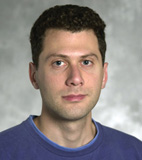This is what a number of Israeli scientists, led by Dr. Dan Frumkin from the Weizmann Institute, have developed within the framework of the start-up company Nuclex, a kit that detects artificial DNA. In an article published in a scientific journal FORENSIC SCIENCE INTERNATIONAL: GENETICS

Over the past twenty years, the capabilities of DNA analysis have caused a revolution in forensic science, and have also become a significant tool in the law enforcement system. Today, DNA evidence is the key to clearing or acquitting suspects in a variety of crimes, from theft to rape to murder. However, the disturbing possibility that DNA evidence can be falsified has so far been ignored. This is what Dan Frumkin, Edman Wasserström, Ariane Davidson from the Israeli Nuclex company, and Amnon Graf, from the Forensic Identification Department of the Israel Police state in the journal FORENSIC SCIENCE INTERNATIONAL: GENETICS under the title "Authentication of DNA Samples"
"It turned out that molecular biology techniques such as PCI, molecular cloning and recently also methods of whole genome amplification (WGA) allow anyone with basic equipment and knowledge to produce virtually unlimited amounts of synthesized (artificial) DNA with any genetic characteristic they desire .”
"This artificial DNA can be affixed to the surface of a bone or incorporated into original human tissues, and implanted at the crime scene. In this article we show that the current forensic procedure fails to differentiate between such a sample of blood, saliva and contact on a surface, on which the DNA is artificial, and between real DNA samples. Moreover, entering them into the Profiler Plus system, the system the police usually use to identify suspects, did not show any suspicion of an anomaly."
"To deal with the problem effectively, we developed an authenticity test, which distinguishes between natural and artificial DNA based on methylation analysis of a series of genetic locations. In natural DNA, some of the positions are bendable and others are not, while in artificial DNA, all positions are non-bendable."
"The kit was tested on blood samples, saliva and surfaces that came into contact with the subject, with complete success. Adopting the use of a sample authentication kit during forensic procedures is essential to maintain the integrity of the use of DNA evidence in the legal system. They conclude."

6 תגובות
Lotem:
What you wrote in the link does not refer to what was said in the article accurately and completely.
First of all - the article talks about synthesized DNA - that is - one that is not taken from anyone but created by artificial means (therefore the article also talks about how it can have any desired characteristics).
The article also claims that false DNT cannot be methylated anywhere at all.
I am not familiar with the details and I have no idea what the reason for this is, but your claim that the study is unnecessary ignores this claim.
Moreover - you are basing yourself on the opposite assumption (in relation to the DNA you are talking about it is not clear whether it is synthetic DNA or not).
Therefore - one of the two: either Dr. Frumkin's claim is simply wrong (and then you should have said so and not claim that the research is unnecessary) or you are referring to a different matter than the one discussed in the article.
By the way - to me, the fact that synthetic DNA cannot be methylated seems to be a completely temporary situation, the whole meaning of which is that the synthesized DNA still does not simulate the real DNA well enough. If this is the case then it is likely that at some point you will find a more successful technology - one where it will be possible to replicate exactly what can be replicated in natural DNA and when that happens, the described method will stop working.
Alex:
Not true.
After all, it is not about finding some DNA in a very specific place at the crime scene, but about creating a situation where the investigators will find this DNA in all the places they look.
Therefore, a lot of DNA from the same source is needed.
Why would anyone want to grow someone else's fake cells, a process that requires a laboratory, a team of scientists, time and a lot of money, if you can simply steal the samples from whoever you want using various tricks, something that requires a millionth of the effort?
Planting evidence is an invention from the dawn of history, what did they discover that we didn't know?!
An unnecessary idea
I wrote a detailed explanation on the blog
http://www.tapuz.co.il/blog/ViewEntry.asp?EntryId=1533750
The attempt to sell a solution, to a problem that could be a risk if published, reminds me of Baron Munchausen pulling himself out of the swamp by the hairs of his head.
It won't be so practical in 100 years when all DNA will be artificial
They announced the problem after finding a solution
Why?